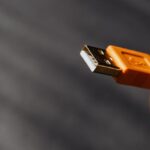Configuration, and Optimization Guide
The HSSGameStick has become one of the most popular plug-and-play retro gaming devices for classic gamers and emulator enthusiasts. Compact, affordable, and packed with thousands of games, it turns any modern TV into a retro gaming station in seconds. However, to get the best performance, graphics, and user experience, understanding and adjusting the manual settings of your HSSGameStick is essential.
Whether you’re setting it up for the first time or trying to optimize gameplay, this comprehensive guide will walk you through everything you need to know about HSSGameStick manual settings, including how to access them, what each setting does, and how to customize them for maximum performance.
What Is HSSGameStick?
The HSSGameStick is a small, USB-sized Android-based or Linux-based gaming console that plugs directly into your TV’s HDMI port. It’s designed primarily for retro gaming, emulation, and casual console experiences. Most models come preloaded with 10,000+ retro games from platforms like:
- NES, SNES, Sega Genesis
- PlayStation 1
- PSP
- Game Boy Advance
- MAME arcade
- and many others
It’s a plug-and-play system, meaning it’s ready to use right out of the box. But for those who want more control — over performance, controller mapping, display, or emulation — the manual settings feature is a game-changer.
Why Manual Settings Matter on HSSGameStick?
While the default settings are enough for casual users, they don’t always deliver optimal performance or compatibility. Manual settings let you:
- Improve graphics quality and screen scaling.
- Boost performance and reduce lag on high-end emulators.
- Map controls for a more comfortable gaming experience.
- Adjust audio and video settings for better output.
- Enable or disable specific emulation features for compatibility.
- Install new emulators or update existing ones.
In short, manual settings give you complete control over how the GameStick performs.
How to Access Manual Settings on HSSGameStick?
Accessing manual settings depends on the model and software version of your GameStick, but generally, you can follow these steps:
Step 1: Boot Up Your HSSGameStick
Connect the device to your TV’s HDMI port and power it on. Wait until the main game selection screen appears.
Step 2: Enter the Settings Menu
Using your controller or remote, navigate to “Settings” or “System Settings” on the main menu.
In some versions, this might be under “Advanced Settings” or “Emulator Settings.”
Step 3: Enable Developer / Manual Mode (If Required)
Some devices require enabling “Advanced” or “Manual Settings Mode” to access deeper configuration options. You can usually find this under “System → Advanced.”
Key Manual Settings You Should Know
Here’s a detailed breakdown of the most important manual settings you’ll encounter on an HSSGameStick and how to configure them:
1. Display & Resolution Settings
- Screen Resolution: Choose between 720p, 1080p, or 4K (if supported). Higher resolution = better visuals but may affect performance on some emulators.
- Aspect Ratio: Adjust to 4:3 (original retro) or 16:9 (widescreen).
- Scaling Options: Stretch, maintain aspect ratio, or pixel-perfect.
- V-Sync / Frame Sync: Helps reduce screen tearing during fast gameplay.
Recommended:
- Resolution: 1080p for most TVs
- Aspect Ratio: 4:3 for retro authenticity
- V-Sync: ON for smoother visuals
2. Controller Configuration
One of the most powerful features of manual settings is custom controller mapping.
- Remap Buttons: Assign each button manually for comfort or game-specific needs.
- Analog Sensitivity: Adjust stick sensitivity for racing or action games.
- Turbo Buttons: Enable rapid-fire features for shooters.
- Vibration Feedback: Turn on/off for supported controllers.
Tip: If using third-party wireless controllers, re-map them for each emulator to avoid input issues.
3. Emulator-Specific Settings
Each emulator (PS1, NES, GBA, etc.) has its own manual settings for deeper customization.
- Frame Skip: Skips frames to improve performance on heavy titles.
- Rendering Mode: Choose between software or hardware rendering.
- Shader Effects: Add CRT scanlines, smoothing, or retro filters.
- Save States & Auto-Save: Enable autosave after each level or session.
- Cheat Codes: Enable support for cheat databases.
Recommended:
- Enable hardware rendering for 3D consoles like PS1 and PSP.
- Turn frame skip ON if you experience lag on higher-end emulators.
4. Network & Cloud Settings (Optional)
If your HSSGameStick runs on Android or supports Wi-Fi, you can adjust network settings:
- Wi-Fi Setup: Connect to your home network.
- Cloud Sync: Save your game progress to the cloud.
- Online Multiplayer: Enable/disable online gaming features (if supported).
While not available on all models, some GameStick versions allow over-the-air updates and even ROM downloads directly from the network.
5. Audio & Sound Settings
- Audio Output: Choose between HDMI, AUX, or Bluetooth (if supported).
- Volume Control: Set global or per-emulator volume levels.
- Latency Adjustment: Reduce audio delay for rhythm-based games.
- Stereo / Mono: Adjust based on preference or original console support.
Tip: If you experience audio lag, lowering the latency buffer can make a big difference.
6.Storage & ROM Management
Manual settings also let you manage where your games and save data are stored:
- Internal Storage: Use built-in memory for faster loading.
- External Storage: Configure SD card or USB drives for large ROM collections.
- Game Organization: Sort by console, alphabetical order, or recently played.
Best Practice: Use an external USB 3.0 drive if you plan to store large PS1 or PSP game files.
Advanced Manual Settings (For Power Users)
For advanced users, the HSSGameStick can be customized even further:
- Custom Firmware: Install RetroArch or other front-ends.
- BIOS Management: Manually load BIOS files for specific consoles (e.g., PS1 or Sega CD).
- Overclocking (Caution): Some models support mild CPU overclocking for better performance.
- Theme Customization: Change the UI look and feel.
Warning: Advanced settings can improve performance but may void warranty or risk device stability. Proceed only if you understand the implications.
Troubleshooting Tips
If something goes wrong while adjusting manual settings:
- Black Screen or Crashes: Reset to factory settings via the main system menu.
- Controller Not Working: Re-pair or re-map controls.
- Audio Issues: Check HDMI audio output settings.
- ROMs Not Loading: Verify correct folder structure and BIOS files.
Final Thoughts: Master Your HSSGameStick Experience
The manual settings on the HSSGameStick unlock its full potential. While the device works fine out-of-the-box, customizing resolution, emulators, controller mapping, and performance settings transforms it into a powerful retro gaming hub.
Whether you’re a casual gamer who just wants a smoother experience or a retro enthusiast seeking pixel-perfect emulation, exploring these settings is the key to getting the best from your HSSGameStick.
FAQs
How do I access the manual settings on my HSSGameStick?
Go to the main menu → Settings → Advanced Settings. If you don’t see advanced options, enable “Developer Mode” or “Manual Settings” from the system settings.
Can I improve performance by changing manual settings?
Yes. Adjusting frame skip, resolution, and rendering mode can significantly boost performance, especially for demanding emulators like PSP or PlayStation.
Will changing manual settings delete my games or saves?
No. Changing manual settings doesn’t affect your installed games or saved data. However, performing a factory reset will erase everything.
How do I add more games to my HSSGameStick?
Insert a USB drive or SD card with properly formatted ROM files, then scan them from the “Game Management” or “Storage Settings” section.
Is it safe to overclock my HSSGameStick?
Some models allow safe overclocking for better performance, but it’s recommended only for advanced users. Overclocking can cause overheating or void your warranty.







